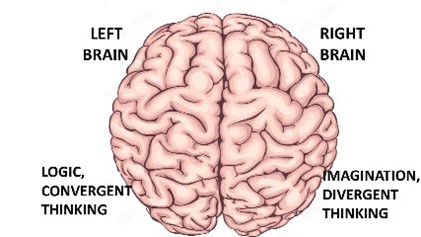 As writers, we are in the business of “creating,” but what exactly does that mean? By definition, the word, creation, means “the act of making, inventing, or producing something, especially something new or different. It can be an original work of art, the first representation of a dramatic role, a musical work, a unique combination of words that tell a new story, or the retelling of an old story, newly.
As writers, we are in the business of “creating,” but what exactly does that mean? By definition, the word, creation, means “the act of making, inventing, or producing something, especially something new or different. It can be an original work of art, the first representation of a dramatic role, a musical work, a unique combination of words that tell a new story, or the retelling of an old story, newly.
All that we are is the result of what we have thought. ~ Gautama Buddha
Original or novel ideas tend to be associated with sessions that generate lots of thoughts. Furthermore, the ideas that are identified as divergent, or different, tend to come later in such sessions, so persistence is a good trait to cultivate. Don’t go over the “creative cliff” and stop early under the illusion that creativity wains. Studies reported in the Harvard Business Review,* indicated that creativity does not decrease over time, but productivity might. In their study, professional and amateur comedians were surveyed for their beliefs of how creativity might decline over time, then were asked to write a caption for a cartoon. Those comedians who believed their first ideas would be their best, stopped ideation earlier, and fewer of their jokes were rated highly creative. Keep thinking.
In a second study,* participants were asked how often they participated in creative work. Those who participated frequently were less likely to buy into the idea that creativity declines over time. Just keep writing!
Right Brain/Left Brain
We are told from an early age that people who use the right side of their brain are the artistic, the creative types, while those who use the left side of their brain are more analytical and logical. In truth, the right and left sides (hemispheres) of our brain function cooperatively and it is difficult to ascribe the complicated process of divergent thinking specifically to one or the other.
Cowboy wisdom states that: “Ain’t no such thing as an easy job,” and that certainly applies to trying to understand our brains, creative or analytical. However, recent studies of brain function provide a new framework with which to understand how we think, (and therefore write), creatively.
 If not right-brain/left-brain, where in our brains do the ideas come from? That is a highly complex question, but neuroscientists are closing gaps in our knowledge, (Abraham, 2018). We now understand that there are three areas of functional nerve connections, two them serve to help in different tasks, and the third serves to maintain balance between those two. The first is known as the Central Executive Network, (CEN), and serves in decision-making, and managerial actions. The second is known as the Default Mode Network, (DMN), and acts like an autopilot, operating in the background, computer-like. The third network is well-named. It is the Salience Network, (SN), because it acts to assess which is more important at the moment, executive action or internal thought processes, including daydreaming. Numerous studies using functional Magnetic Resonance Imaging, (fMRI), have shown that the Default Network becomes engaged during periods of rest or low task requirement. People in this state report being active in “internally-directed thoughts,” whereas the default mode network becomes disengaged during periods of high cognitive demand (CEN). There is good evidence that the flow of imaginative thinking, especially autobiographical and episodic memory occurs when the Default Mode Network becomes engaged. So, instead of blaming our creativity, (or lack of it), on left brain/right brain output, it makes more sense to focus on the balance between our “trouble shooter brain,” (CEN), and our “stream-of-consciousness brain,” (DMN).
If not right-brain/left-brain, where in our brains do the ideas come from? That is a highly complex question, but neuroscientists are closing gaps in our knowledge, (Abraham, 2018). We now understand that there are three areas of functional nerve connections, two them serve to help in different tasks, and the third serves to maintain balance between those two. The first is known as the Central Executive Network, (CEN), and serves in decision-making, and managerial actions. The second is known as the Default Mode Network, (DMN), and acts like an autopilot, operating in the background, computer-like. The third network is well-named. It is the Salience Network, (SN), because it acts to assess which is more important at the moment, executive action or internal thought processes, including daydreaming. Numerous studies using functional Magnetic Resonance Imaging, (fMRI), have shown that the Default Network becomes engaged during periods of rest or low task requirement. People in this state report being active in “internally-directed thoughts,” whereas the default mode network becomes disengaged during periods of high cognitive demand (CEN). There is good evidence that the flow of imaginative thinking, especially autobiographical and episodic memory occurs when the Default Mode Network becomes engaged. So, instead of blaming our creativity, (or lack of it), on left brain/right brain output, it makes more sense to focus on the balance between our “trouble shooter brain,” (CEN), and our “stream-of-consciousness brain,” (DMN).
Logic will get you from A to B. Imagination will take you everywhere! ~ Albert Einstein
What is Creatvity?
Understanding creativity has the essential problem of deciding whether something is new or divergent from the mainstream. One tool that is used in assessing creativity is the Alternate Uses Test, (AUT). In this test, individuals are asked to list as many uses for a common object, (a paper clip, a brick), as they can in three minutes. This gives a measure of the number of ideas a person has but says little about the uniqueness of their ideas. Thus, a second phase of the AUT compares the ideas among a number of participants to see if a particular idea stands alone. Remember, the purpose is to identify the number, AND the uniqueness of ideas, so that attempts to improve both can be made.
So, what makes an idea new or special, and how can we recognize it as such? Judging the socially acceptable or admirable quality of an idea has always presented difficulties. In the 1964 Jacobellis v. Ohio, Supreme Court case, Justice Potter Stewart delivered the now infamous statement, “But I know it (e.g. pornography), when I see it.”
The ultimate test of creative writing is whether others appreciate what you have written. The best way to find that out is to ask others to read your stuff. Friends and family are an obvious source of people to read what you have written, but a more useful source of help is available through Beta Readers. Beta readers are folks, often writers as well, that enjoy reading good prose and providing helpful comments on it. Beta readers are not professional editors or critics, just ordinary people who enjoy the written word and stories they tell. Most writing organizations, WAG among them, have the mechanisms in place to connect writers with appropriate beta readers. It is not uncommon to do a book swap. That is, exchange books and critiques. One learns as well by reading!
A potential barrier to creative writing is fear. It can be frightening to hand over the piece you’ve worked on diligently for months if you think your work will be rejected, torn apart and otherwise unappreciated.
It takes a lot of courage to show your dreams to someone else. ~ Aristotle
But, there’s another point of view:
Fortune favors the Audacious. ~ Desiderius Erasmus
So be a little audacious!
Much could be said how to beat fears associated with creativity. Fear of rejection? (collect those rejection slips and wear them like a badge of courage!). Fear of revealing yourself, or being judged? (ask yourself who should cast the first stone?). Fear that you are not a creative person, (If you can bang away at a keyboard, or wrestle a pencil around a piece of paper all day, then want to go back again the next day, you ARE a creative person).
Think about it.
Some Resources:
Write it. Shoot it. Publish it. Crochet it. Sauté it. Whatever. MAKE IT, by Joss Whedon, American filmmaker
*Loran Nordgren and Brian Lucas, Harvard Business Review, January 26, 2021.
Anna Abraham, Neuroscience of Creativity. Cambridge University Press, 2018.
[Editor’s note: WAG would love to see articles on any and all topics of interest to writers. Please send your ideas or finished pieces to Cynthia D. Bertelsen at BlogEditor@writersalliance.org for consideration. Remember: these posts are more than just posts, for they are actual articles and can be cited in your CV/résumé in the same way you would a short story, essay, or any other writing credit you may possess.]
